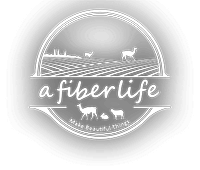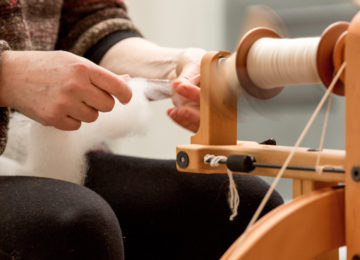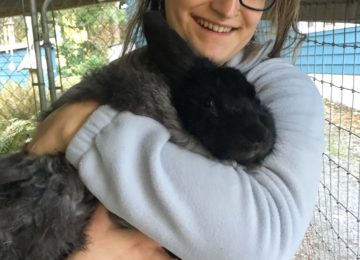Frogging: How knitters fix mistakes
Categories:
To Frog or not to Frog:
In knitting, the term frogging explains itself. It is the process by which the knitter takes a deep breath and starts to pull out all of the stitches she’s previously knit. Usually, she does this and says to herself, “Ribbit, Ribbit, Rippit,” as she watches the rows disappear. Curly loops turn into the slightly tortured shape of yarn that had once been carefully coaxed into knits or purls. The rows rip away. Zig zags of thread pile on the floor. The knitter sighs. Sometimes she wipes tears. Sometimes she screams. But the deed is done and her fingers will soon itch to start again.
The decision is a tough one.
The decision to frog or not to frog is a hard one. Despite what a vast number of knitters claim, that they knit for the process rather than the product, we all find ourselves pondering whether to frog out a mistake in order to correct it. Worse, the majority of knitters I’ve talked to have numerous finished or almost finished projects stashed in the possible to-be-frogged pile. I have the fully cabled back of a men’s alpaca sweater that I’ve been pondering frog fate for over 25 years. It would be beautiful if I finished it, but it’s very very big and I’d have to find someone that would fit into it. I have a lace weight sweater with a tie collar started, but the neckline is too fiddly and I can’t quite understand the directions. So, it sits in my stash. Someday I might tackle it. Someday I might frog it. Someday I might try to tackle it and even still might have to frog it.
And it always requires more work
Chris from my new spinning group knits all day. The others in the group raved about her lace knitting. They said, “You should see the lace dress she made!” She mumbled, “The one I made twice.” She went on to explain that she had made the dress starting at the bottom and everything went okay until she got to the neck shaping. She couldn’t get the decreases right so that it fit. When she finished it, she hated it. There was no “fixing” or going back to try the shaping again. She had to frog the whole thing. Rip-it, rip-it all the way down to the skirt bottom. Into nothing again—just a ball of yarn. And then she started from the top—the neck first where she could see the shaping and increase for the arms. It worked, and she knit the entire skirt all over again. No small feat. No tiny snap of the finger decision.
Three different approaches to mistakes
It seems to me our approach to mistakes or seemingly insurmountable challenges can fall into 3 different frogging categories.
- There are the knitters and the people who just keep going, just keep knitting despite the imperfections. These knitters don’t frog, they don’t rip-it, they carry on. As with life, these people don’t agonize over the decision of whether or not to start over. If they don’t like the finished product, they find someone who does and move on.
- There are the knitters and the people who just can’t move on until they go back and fix things. They rip everything out or at least back to the mistake. Then they diligently, in a determined and committed way re-do what they undid.
- Then there’s the third category. The people and knitters who just shelve away the imperfections. They live with the half knit sweaters and the fiddly necklines and the unfinished projects that they will probably never return to.
And then there’s life on the farm
And so, this takes us to the kitchen conversation that Greg and I had shortly after we moved to Whidbey Island. Shortly after we brought our small herd of wild guanacos to our farm. Shortly after I realized we had no business buying this herd that would otherwise be in a zoo with professional zoo staff who had extensive wild animal knowledge and experience. We had gathered advise from other camelid owners who all told us we had to get over our fears and just teach them who is boss.
We both had injuries from trying to do this tough cowboy approach. We both knew that these animals didn’t want us to handle them or touch them or halter them. We both knew we had to be able to halter them soon because the little boys were going to need to be weaned and moved into their own paddocks. And I was pissed.
I was mad and hurt
“It’s just plain irresponsible!” I screeched. “We have these animals and we know nothing about caring for them. And we could get seriously hurt.” I was referring to the scary incident when our stud, Coacher, had turned on me while Greg and I had been trying the wrangling method of halter training that one camelid owner told us to use. Coacher had reared up and charged me. He yanked the lead rope and my arm that was attached to it so hard that my rotator cuff and other ligaments in my shoulder were torn. He chest bumped me nearly to the ground. I was hurt and frightened. Greg had been unable to help. I had intrusive images of the event for a month after. At the kitchen counter I was flashing back to that moment. I was not going to do that again.
Greg responded rationally, “Well, do you want to get rid of them? Do you want to sell them and be done? We could get some nice pygora goats instead.”
To frog or not to frog.
To go back and re-do.
Most of the time I’m someone who frogs back to the mistake.
Some of the time, I’m also a stasher—put it on the shelf and wait for the decision.
We had to decide
In this case, with the crazy wild guanacos that now lived in our barn, I chose to do both. I decided to go back and figure out where we had gone wrong. I decided to find another way to halter train—a different way to do the same thing, but safer and slower. I found Marty Macgee and her online classes on Camelid Dynamics. Additionally, I decided that we would have to wait and see. We could shelf the decision about frogging the whole herd and replacing them with some small and docile goats. We would wait to see if this new approach could get us to where we needed to be.
We didn’t have to frog the whole herd!
We signed up. We worked on the skills. And sure enough, in 3 months, we could halter 4 of the guanacos without any wrangling. My shoulder healed, the boys got moved to their own paddocks, and we didn’t have to frog the whole herd! I feel a sense of awe everyday when I look out at them grazing in our pasture. I feel amazed every time I spin their exquisite fiber into the softest, warmest yarn I’ve ever felt. The very fiber that I may indeed need to frog one day!
Keep the connection -to a- fiber life!
Be the first to learn shop updates, new essays, events, and special offers!
Visit-the-Shop
Our animals work year round to grow the most exquisite fibers because we’re the only commercial source of guanaco fiber in the US. Spinners, knitters, and natural fiber wearers, we can’t wait for you to touch the softness.




